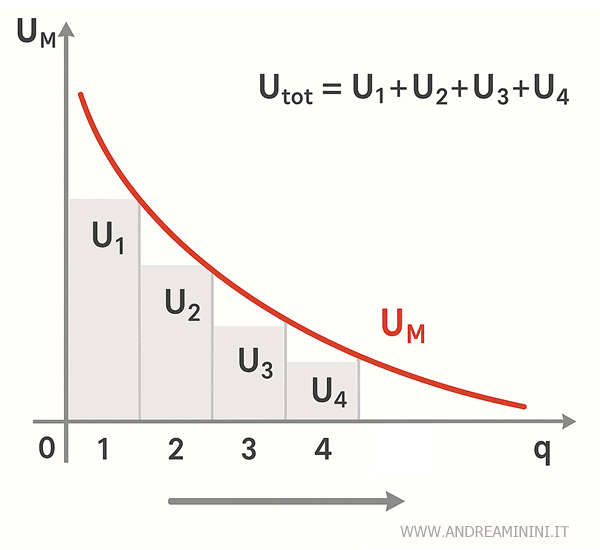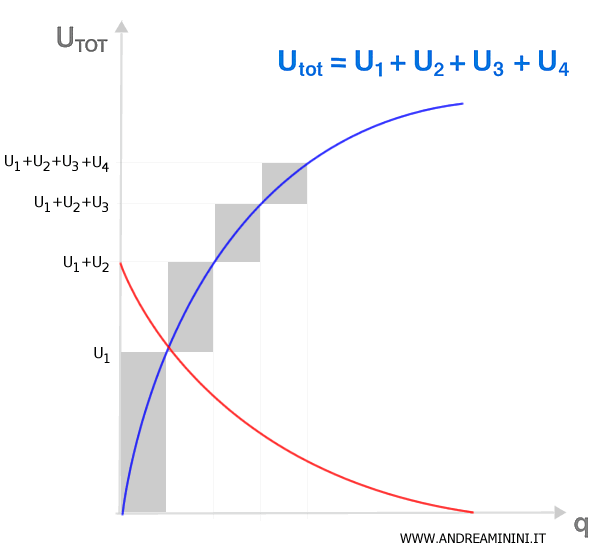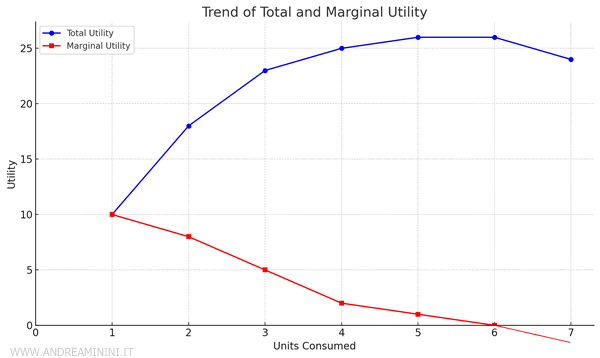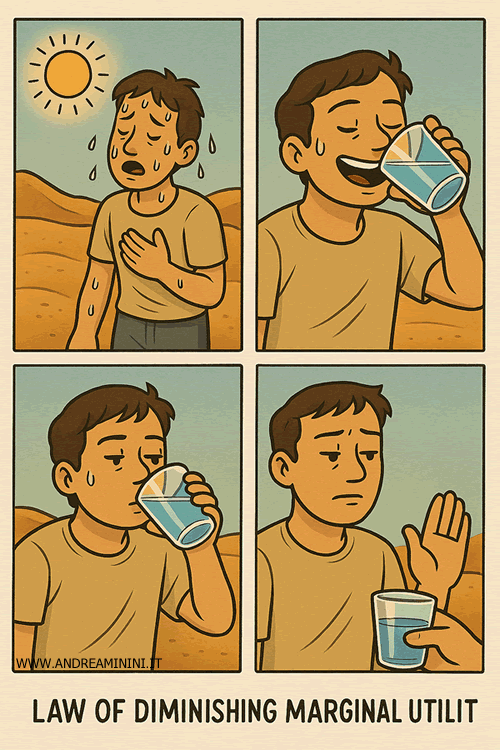Total Utility
Total utility (Uₜₒₜ) is the total amount of satisfaction or benefit a person gets from consuming a certain number of units of a good or service: \[ U_{tot} = U_1 + U_2 + U_3 + \dots + U_n \] Here, \( U_n \) is the utility gained from the nth unit.
In simpler terms, total utility tells us how much overall enjoyment or value someone gets from consuming something - like eating several slices of pizza.
This is a core idea in microeconomics. Why? Because it helps us understand how much a product actually contributes to someone’s sense of well-being.
Let’s break it down with a quick example. Say I eat four slices of pizza, and each slice gives me the following amount of satisfaction: 10, 8, 5, and 2. That means:
\[ U_{tot} = 10 + 8 + 5 + 2 = 25 \]
Now, the extra satisfaction from eating *one more* slice is what we call marginal utility.
\[ U_{marg} = \Delta U_{tot} \]
If my total utility goes from 25 to 26 after eating a fifth slice, then:
\[ U_{marg(5)} = 26 - 25 = 1 \]
As you eat more slices, that extra satisfaction tends to drop off. This is known as the law of diminishing marginal utility.

So, total utility is really just the sum of all those little bits of satisfaction (the marginal utilities) added up across every unit you consume.
Seeing this visually makes it even clearer:

Total utility is key for understanding consumer decision-making. It grows while there’s still a need, flattens out once you’re satisfied, and can actually drop if you overdo it.
A Real-Life Example
Let’s stick with the pizza. Suppose we assume utility can be measured with actual numbers (even if it’s a bit of a simplification). Each slice brings some level of pleasure - or utility.
| Units Consumed (n) | Marginal Utility (Uₘ) | Total Utility (Uₜₒₜ) |
|---|---|---|
| 1 | 10 | 10 |
| 2 | 8 | 18 |
| 3 | 5 | 23 |
| 4 | 2 | 25 |
| 5 | 1 | 26 |
| 6 | 0 | 26 |
| 7 | -2 | 24 |
The first few slices make you happier, but the boost gets smaller with each one. That’s diminishing marginal utility in action.
By the sixth slice, you’re not getting any extra benefit. You’ve reached full satisfaction - also known as satiety.
The seventh slice actually makes things worse. That’s disutility: when consuming more not only doesn’t help - it makes you feel worse.
To sum it up: the first few slices hit the spot. The fourth and fifth keep you full. By the seventh, you’re thinking, “I probably should’ve stopped.”

The total utility curve usually follows three phases:
- Growth phase: Marginal utility is positive, so total utility increases.
- Peak point: You’ve met your need. Marginal utility hits zero.
- Decline phase: Any extra consumption brings disutility. Total utility starts to fall. After slice six, you might feel stuffed. Slice seven doesn’t bring joy - it brings regret.
The highest point on the total utility curve marks the moment you’re fully satisfied. Beyond that, adding more just doesn’t help - and can even backfire.
Think of a really thirsty person. The first few glasses of water bring huge relief. But keep drinking, and it gets uncomfortable - even unpleasant. The same goes for just about anything you consume.

And that’s how total utility works - rising, peaking, and sometimes falling - depending on how much you consume.
